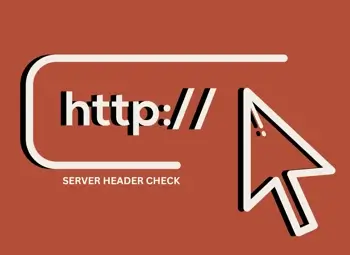Server Headers Check | HTTP Header Check Tool
Use the server headers check tool to receive a report on the information embedded into the HTTP server header.
What is a server header?
A server header, also known as an HTTP header or HTTP server header, is a response header that has information about a web server's software. The header shares important details, like the browser of the client, the page requested, and each request or response in an exchange.
These headers are the backbone of HTTP requests, facilitating information exchange to make sure that the requests and responses are handled appropriately.
How does the server header check work?
To use the server header check, simply enter a URL into the search bar of the tool and hit Check. The tool will then assess the server header and return as much information as it can detect. You can see a full list of the potential information and results below.
What information does a server headers check tool provide?
You will see the utility results displayed after entering a URL into the server headers checker. This could include the following information:
- Content type, which indicates the media type of the resource
- Date, which shows the date and time the message was sent
- Server, which describes the software used by the origin server
- Set-Cookie, which sends a cookie from the server to the user agent
- Connection, which controls the open status of the network connection after the transaction
- Content-Encoding, which lists any encodings in the proper order on the message payload
- Vary, which describes the parts of the request message that influenced the content of the response
- Cache-Control, which clarifies browser caching policies in client requests and server responses
- Transfer-Encoding, which isn't applied to a resource but rather to a message between two nodes
- Expires, which indicate the length of time before cached copy expiration
- Content-Length, which shows the size of the entity body in the message
- X-Powered-By, which indicates what technologies the webserver uses
- Link, which lets the server direct clients to another resource with metadata
- Pragma, which affects the request and response chain

While each visitor may have a different reason for determining the server headers of a particular URL, the information provided should help you in some way.
It doesn't provide all possible information. For example, it doesn't include the URL's IP address, which you can find using a DNS lookup tool. You can also find your public IP. However, the server headers check tool still provides users with a great deal of valuable information.
The server header checker has multiple uses. Whether you want to know what kind of server hosts the site or if the page serves up via a cached file, the server headers check helps. For users who have or manage their own website, the tool helps determine if their status code returns the correct response.
About the server headers check tool
Similar to email headers, HTTP headers exist as hidden parts of websites that only the browser can read. The headers tell the browser how the website should behave when the browser opens the page. The headers give the webmaster a lot of control over how the webpage behaves within the browser. Therefore, the HTTP header checker provides important information to the user about a server response header.
Essentially, the server header refers to the software used to handle the request from the server that generated the response. Although many of the more popular HTTP header responses are listed above, there is a complete list of HTTP headers at the W3 Consortium’s Status Code Definitions page. Access their page if you find that the HTTP header you're looking for is not as common or harder to find.
The server header check is a simple and thorough way for webmasters to check that their HTTP response headers behave as intended.